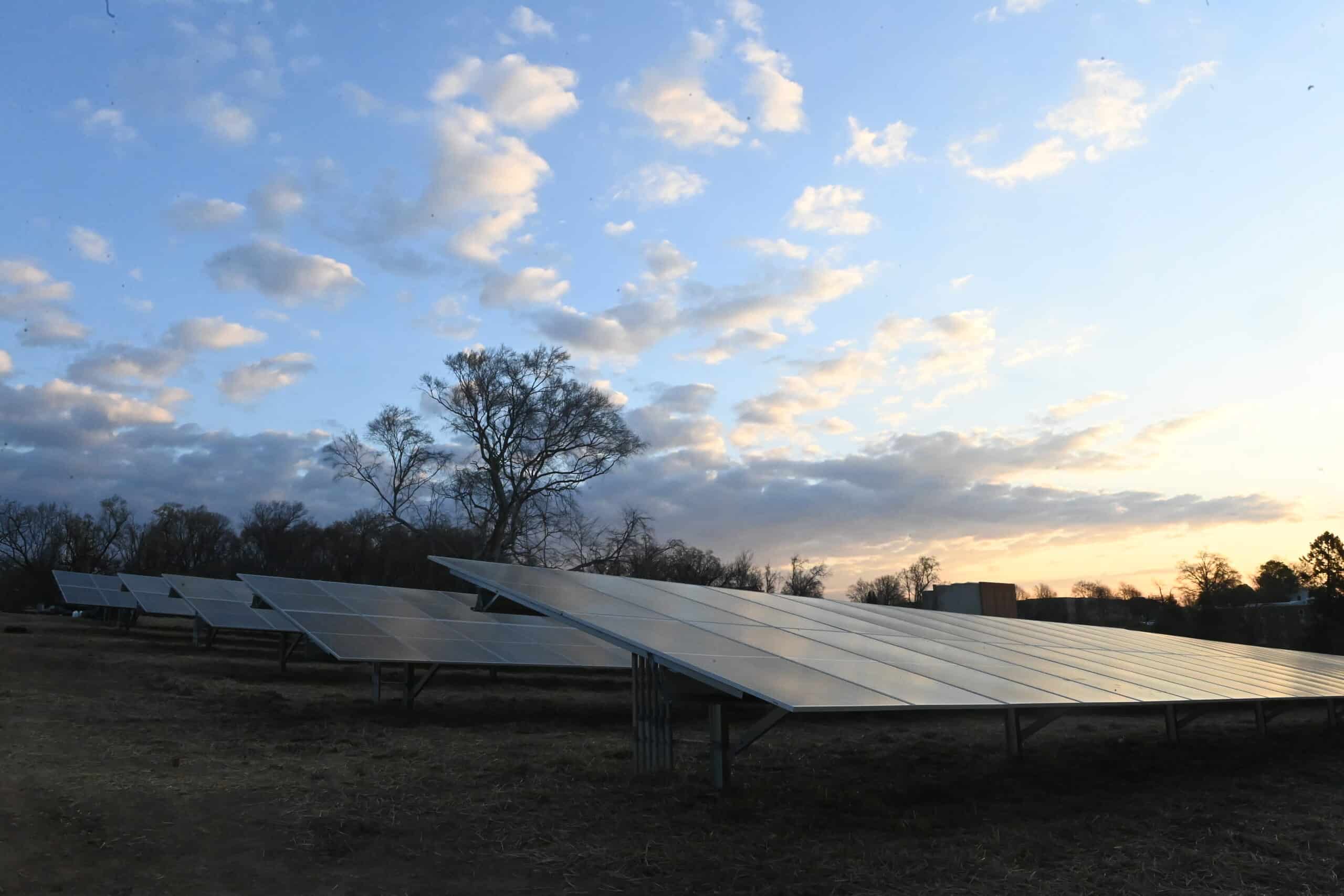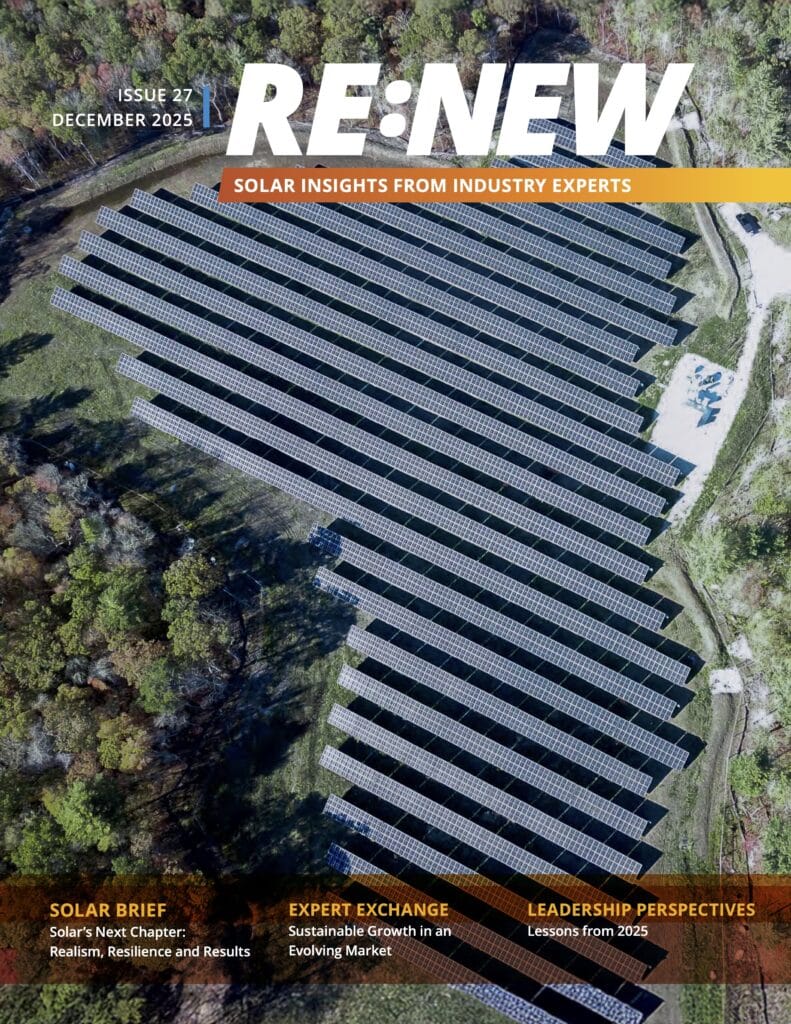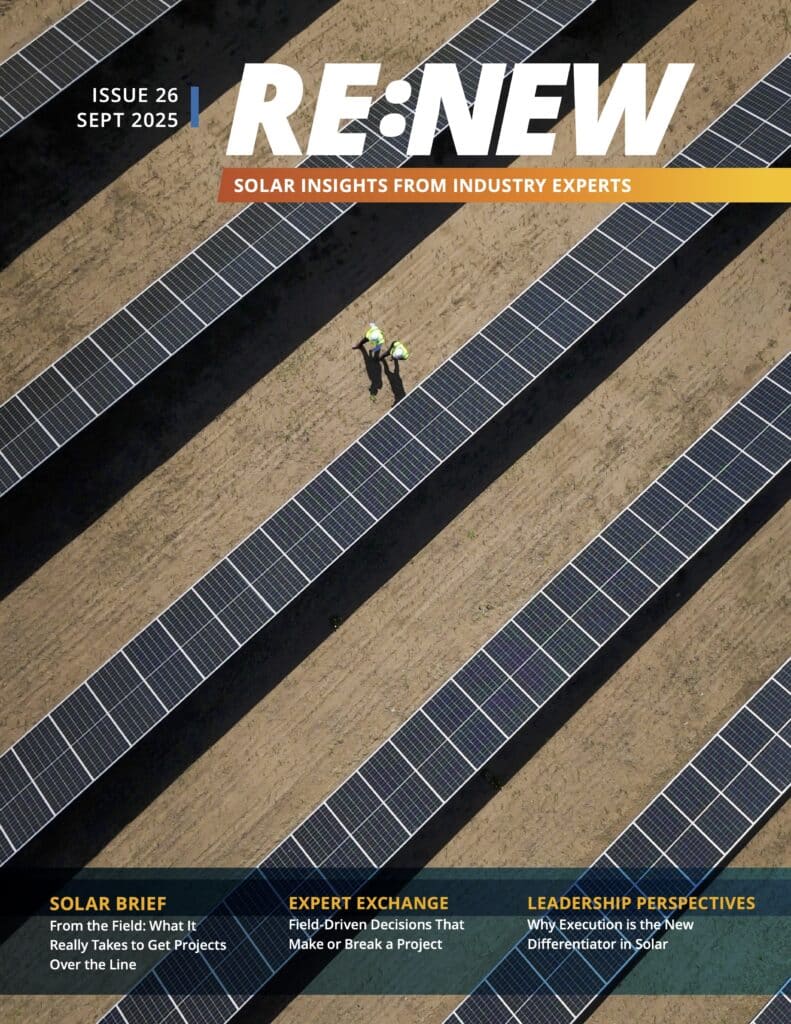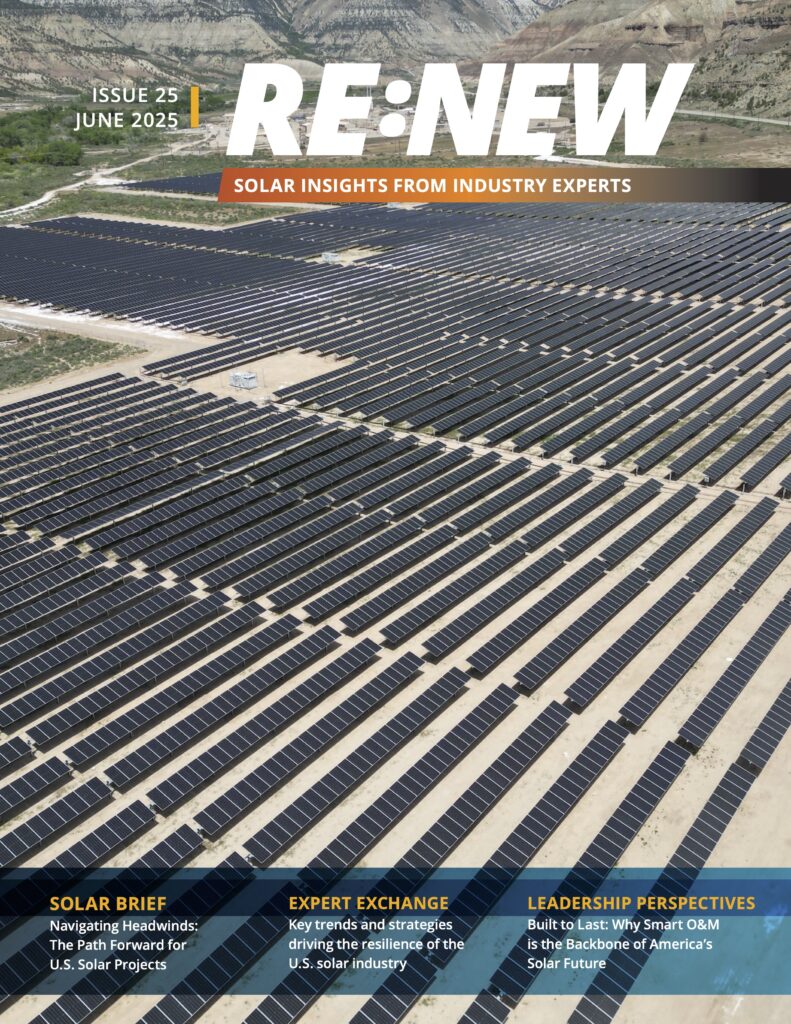For today’s facilities managers and business leaders, the conversation around solar energy is less about whether it makes sense and more about how to implement it. Solar’s inherent appeal, rooted in innovation, environmental stewardship and energy self-sufficiency, makes it an attractive proposition from the start. However, the process of taking a solar project from design to deployment can seem overwhelmingly complex, especially to those without prior experience. So, how can this journey from concept to reality be successfully navigated?
Though initial interest in solar often stems from sustainability commitments, a strong economic case typically solidifies the decision to proceed. Solar’s value extends well beyond sustainability, positioning it as a strategic force in strengthening your organization’s bottom line and competitive edge.
Why Solar Makes Compelling Business Sense Today
Solar installations can significantly reduce business electricity bills, with savings depending on system size, local rates and sunlight availability. Grid-tied systems, linked to existing utility infrastructure, achieve this by operating in parallel with utilities, prioritizing self-generated solar power during the day and switching to grid power when solar is unavailable (like at night), ensuring continuous service with lower bills.
Furthermore, solar offers price stability compared to conventional electricity costs, which historically rise by 2-4% annually, driven in part by volatile fossil fuel prices. Predictable solar rates, such as those in Power Purchase Agreements (PPAs), increasingly outperform utility rates, creating a compounding savings advantage. This cumulative financial benefit over a solar system’s 25- to 35-year operational life delivers substantial long-term strategic gains.
In addition to lowering utility bills, solar also offers significant tax incentives that reduce upfront investment. The federal Investment Tax Credit (ITC) directly cuts federal tax liability by 30% of total solar installation costs. It’s essential to note that, although these incentives are currently in place, their future is contingent upon ongoing legislative discussions. As is, this baseline credit can increase up to 50% through adders, such as for projects in energy communities (areas impacted by fossil fuel transitions) or by meeting specific domestic content or labor requirements.
Collectively, these incentives make solar financially accessible, helping businesses overcome initial cost hurdles and realize substantial economic benefits much faster than anticipated.
Understanding Your Solar Options: Finding the Right Fit
After establishing the business case for solar, choosing the right system for your facility is key, as solutions vary based on space, budget and resilience goals. Understand that standard grid-tied solar (without storage) offers no backup during grid outages due to safety protocols. For uninterrupted power, your system must be specifically designed with battery storage and an automated transfer switch to power essential loads.
To help you compare, here’s a quick reference chart outlining the main commercial solar options:

Choosing the right path is easier with an experienced partner. Standard Solar’s team of experts is dedicated to guiding you through every step, helping you evaluate your site, compare system types and design a solution tailored to your facility’s unique needs.
Navigating Financing Options: Aligning Investment with Business Goals
With a solar solution in mind, the next step is understanding how to finance your project in a way that aligns with your business’s broader financial strategy and cash flow needs. The commercial solar financing landscape offers multiple pathways, each with distinct advantages depending on your circumstances:
- Power Purchase Agreements (PPAs): With a third-party developer like Standard Solar owning and operating the solar system, there is zero upfront cost. You pay a fixed, discounted rate for electricity generated over a 20- to 28-year term. Developer profits and your savings are tied to system performance, aligning interests. This includes small annual rate escalators, typically below utility rate increases.
- Solar Leases: Offers access to solar with no upfront costs, as a third-party lessor owns and maintains the system, also claiming the tax credits. You pay a fixed monthly lease for the equipment over a typical 15- to 25-year term—this payment is for the system itself, distinct from usage-based PPA payments. These predictable payments are designed to be lower than your usual utility costs, providing net savings. Common end-of-lease options include purchasing the system, renewing the lease or having the system removed.
- Direct Ownership (Cash/Loan): Gain full control and all economic benefits, including tax credits, by purchasing with cash or a loan. While a cash purchase requires significant upfront capital for the highest long-term returns, loans, which typically have terms of 5 to 20 years, provide access to ownership and full tax advantages without requiring large cash reserves. All maintenance is the owner’s responsibility.
- C-PACE Financing (Commercial Property Assessed Clean Energy): Available in participating jurisdictions, this long-term financing can cover 100% of solar project costs for commercial properties, often requiring no upfront payment. Repayment occurs via a voluntary special assessment added to property tax bills, with terms typically matching the project’s lifespan (up to 20 to 30 years). The assessment is tied to the property and generally transfers upon sale, enabling projects to be cash-flow positive from the outset.
Operational Considerations: Ensuring Performance and Reliability
Regardless of the ownership or financing model you choose, professional operations and maintenance (O&M) are crucial for maximizing system performance and achieving long-term savings. Even if your business owns the system outright, engaging a qualified O&M provider ensures continuous monitoring, rapid issue resolution and consistent energy production throughout the system’s life.
Implementation Roadmap: From Planning to Power
Successfully deploying commercial solar involves several coordinated steps, each requiring careful planning and experienced guidance:
- Permitting and Interconnection:
Navigating local permitting and utility interconnection can be complex, often taking 6–24 months or more. Co-located, accessory-use systems (like rooftop or ground-mount) typically have simpler permitting than primary-use or community solar projects. Experienced developers streamline this process, leveraging relationships with local authorities and utilities to keep your project on track. - Due Diligence and Partner Selection:
Solar is a long-term commitment, especially for PPAs, which can span 20 years or more. Obtain bids from multiple providers, and rigorously vet their experience, financial stability and track record with similar projects. For on-site installations, this is critical to avoid operational disruptions; for community solar, it reduces risk and ensures reliable savings.
Next Steps: Start Your Solar Journey
Articulating the full strategic imperative of solar to executive leadership is essential for moving from concept to action. Beyond the clear financial advantages and risk mitigation benefits, solar should be positioned as a foundational element of a resilient, future-ready business strategy. It strengthens your operational footprint, aligns with evolving stakeholder expectations on sustainability and underscores your commitment to innovation. Most importantly, the opportunity cost is clear: every day without solar is a day of missed savings. With today’s proven technology already delivering strong returns, waiting for future advances means leaving money on the table.
Ready to explore how solar can benefit your business? Connect with Standard Solar for a comprehensive consultation and site assessment tailored to your facility’s needs. By partnering with a trusted team, you’ll navigate technical, regulatory and financial complexities with confidence and start realizing the strategic, financial and sustainability benefits of solar energy sooner than you think. Fill out a form to get started.
More Recent Blog Posts
Delivering on Our Promise: 2025 in Review
December 11, 2025
Scott Wiater · 3 min read
How Student Health Unlocks School Energy Projects
December 3, 2025
Standard Solar · 4 min read
The Remarkable Growth of Community Solar in the District of Columbia
October 22, 2025
Standard Solar · 2 min read
Navigating a Solar Market in Transition: Takeaways from RE+ 2025
September 26, 2025
Megan Byrn · 3 min read





Share